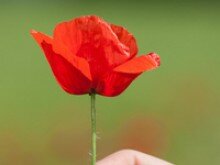Imagined Communities: Collective Aspirations in Contemporary Indian Poetry
How does contemporary Indian poetry negotiate a culture of consumerism, the growing tyranny of the marketplace? K. Satchidanandan investigates various strategies of dissent.
Contemporary literature, even when deeply rooted in the past, cannot help but reflect contemporary experience. Liberation movements across the ‘Third World’ seem to have dried up overnight as commitment to the market system has become sheer ‘common sense’ and no longer a political programme. All values other than those of business society seem to have been abolished and any discussion of the issue of ends, to have become anathema.
The intellectual caste celebrates with euphoria the ‘end of history’ and seals the acquisition of its own professional guild values like ‘freedom’ of speech and ‘free’ elections and holds out a hand for money to that great champion of freedom, the United States. The U.S., in turn, is gearing up for local ‘defensive’ operations around the world, buying nationalised industries on the cheap and reaping the benefits of the cheap labour being thrown open to the multinationals by the collapse of national states and the deterioration of the former ‘Second World’ into ‘Third World’ status.
The emergence of the new aggressive ruthless capitalism has already sounded the knell of autonomous development in the ‘Third World’, including South Asia, forcing the people to become either avaricious consumers or labourers for foreign capital. The days of the grand social engineering projects seem to be over; the dreams of a better society are dismissed offhand as flights of fancy or declarations of subversive intent. Alternative ends are invalidated on the strength of the proved ineffectuality of means. A jubilant valorisation of the careeristic values of a competitive society appears to be the only ethical possibility. Liberty has boiled down to mere consumer choice: poverty is a positive disqualification in a world that privileges the rich.
The market interpretation of freedom translates communal needs into acts of individual acquisition. It also abhors autonomy and reduces cultural diversity into a variety of changeable fashions and marketable lifestyles. Consumer societies are always hostile to collective identities. They believe in standardisation, uniformity and define difference as deviation, a ‘problem’ that requires ‘solutions’. Or else alternate ways of life may arouse spectator interest; they belong to the outerworld of theatre and spicy spectacle, like tribals dancing on a TV screen in a city hotel. Tolerance here degenerates into estrangement instead of leading to solidarity.
Difference is considered safe as long as it is confined to the world of the symbolic game of representation, and does not spill over into the realm of daily coexistence, when it is perceived as a threat. The other’s inferiority is justified by difference; thus tolerance becomes fully compatible with social domination. The promise of equality is withdrawn as difference means distance, non-cooperation and hierarchy. The global origin of problems, economic, ecological and cultural, is effectively hidden from view as new sensitivities are confined to neutral, depoliticised technological discourse.
The remedy of social ills is also privatised. This clash between the social nature of risks and the privatised means of their containment is one of the contradictions of late capitalism. True, the patronage state has collapsed with its suppression of democratic opposition and individual freedom, as well as its monopoly of needs-satisfaction and social status. But is the open market with consumer society the only alternative? Should the obvious failures of the Statist model of socialism lead to a passive submission to the norms of a business society? Don’t we need fresh visions of radical social transformation illuminated by the objective experience of the majority of our people and inspired by indigenous egalitarian ideas and experiments? Don’t we need a political aesthetic that affirms the primacy of the present, the present of struggle and suffering? Remember that the totalitarian systems punish the dissenting artist with prison, exile or even death, while the market society absorbs and contains him, turns him into a showpiece and thus incapacitates him, subverting the very intent of his rebellion. It permits even opposition as long as it is marketable.
How do the writers of our country react to this situation where their identity is either eroded or turned into a purely private, personal, saleable commodity? Let me take the case of Indian poetry. The early modernists of the 50s and 60s were basically committed to the freedom of the individual against the background of debilitating post-industrial infernos with their massification of human beings. I will not say that the modernist problematic is obsolete. There are and will be contexts where the private has to be upheld and defended against the encroachment of the omnipresent gaze of the modern state that turns individuals into subjects without will. The dark days of the mid-70s belong as much to the reality of the immediate past as to the possibility of the immediate future. Still, the modern State is different from the authoritarian regimes of the left and the right varieties precisely because it privatises and diffuses dissent, rather than collectivising it into an explosive energy that shatters the system. This compels writers to evolve counter-strategies for the collectivisation of dissent.
Literary modernism in its Indian form had meant an articulation of the angst and alienation, the divided self, of the Indian caught between the gilded image of his pre-colonial past and his squalid present that roamed the crowded thoroughfares of the post-industrial metropolis. At the ontological level, it meant a search for the lost identity of the individual: a quest that often bordered on the metaphysical. B.S. Mardhekar, Dilip Chitre, G.M. Muktibodh, Harbhajan Singh, Sitanshu Yashashchandra, Gopalakrishna Adiga, Kaa Naa Subramaniam, N.N. Kakkad, Ayyappa Paniker, Navakant Barua, Sachi Routray and other pioneers of modernism in Indian poetry responded to the modern environment in this way. Their responses are not without social dimensions, but their central concern seems to have been the destiny of the individual in modern mass society, rather than that of communities caught in the maelstrom of exploitative modernisation. However, roughly from the 70s onwards, Indian poetry begins to concern itself with collective destinies. A glance at the present poetic landscape in India reveals certain radical concerns whose boundaries often cross one another.
I
The most dominant of these streams may be termed the progressive modernist. The attitudes of the poets embraced by the term are by no means uniform. At one end of the spectrum stand the votaries of armed peasant struggles like the Naxalite poets of Bengal and Andhra Pradesh whose action poetry combines a virile modern idiom with a sincere moral indignation. At the other end stand the followers of Gandhi and Lohia and liberal humanists whose frustration with the system is as intense as those of the Naxalites, except that they hold on to indigenous ideals of peaceful social transformation.
What unites these writers is their recognition of the existence of class inequalities; this, however, is combined in the best representatives of the trend with a deeper awareness of the complexity of human experience and an introspective search for their own selves in relation to the world of outer reality. These tendencies along with their subtler and newer sense of form and idiom rescue these poets from the slogan-mongering and rhetorical mode of some of the early progressives. Nagarjun, Kunwar Narain, Kedarnath Singh, Vinod Kumar Shukla, Asad Zaidi, Vishnu Nagar, Rituraj, Mangalesh Dabral, Surjit Pather, U.R. Ananthamurthy, P. Lankesh, Chandrasekhara Patil, H.S. Shivaprakash, Ali Sardar Jafri, Nida Fazli and K.G. Sankarapillai may broadly be said to belong to this genre.
Some of these poets, like Chandrasekhara Kambar and Kadmmanitta Ramakrishnan have moulded a folk idiom to present themes, issues and structures of feeling related to the life of the rural folk and the marginalized sections of society. The insurrectionary political poetry of the Maoist activists and their co-travellers was an attempt to subvert both the solipsistic ideal of high modernism and the sentimental romanticism of the earlier decades. Look at the poem, ‘Love’, by Murari Mukhopadhyay of Bengal:
When in love,
Do not become the moon.
If you can,
Come as the sun.
I’ll take its heat
And light up the dark forest.
When in love,
Do not become the river.
If you can,
Come as the flood.
I’ll carry its passion
And break the dams of despair.
When in love,
Do not become a flower.
If you can,
Come as the thunder.
I’ll lift its roar to my breast
And send forth the battle-cry to every corner.
When in love,
Do not become a bird.
If you can,
Come as the storm.
I’ll borrow its force
And destroy the palace of sin.
The moon,
The river,
The flower,
The stars
The birds –
We can look for them later.
But today,
In this darkness
The last battle is yet to be fought.
What we need now in our hovel
Is – Fire.
The poet rejects the usual objective correlatives of love employed in romantic poetry, especially symbols and metaphors like moon, river, flower, stars and birds. He replaces them with the warm sun that would illumine the dark woods, the flood of revolutionary passion that would challenge despair, the thunder that would help the poet carry his war-cry to all parts of the world, the storm that would lend him strength enough to pull down “the palaces of sin” and the fire that would burn down the decrepit, decadent, old world. It is difficult to say that the poem is antiromantic; rather it inverts old romanticism and creates a revolutionary romanticism that employs energetic signs like flood, fire, sun and thunder.
A similar rejection is seen in Pash, the Punjabi poet, when he says: “No, I don’t think now about/ such things as/ the fine hues of red/ when the sun sets over the village/ nor do I care about how she feels/ when the moon glides over her threshold at night./ No, I don’t worry about such trifles now” (‘No, I am not Losing My Sleep Over . . .’).
The Naxalite movement also led to a regeneration of the oral folk literature, in an attempt to bridge the gap between the elite urban sensibility and the rural one that demanded another language and another kind of knowledge. Activist-poets like Subbarao Panigrahi (who later became a martyr) and Gaddar of Andhra Pradesh actually went to the villages to learn their idiom while urban co-travellers like Varavara Rao felt they would never understand the worker: “The truth that the worker’s sweat will never utter . . . / Can a drop of ink from a poet’s pen/ ever express it?”
Poets like Dhoomil in Hindi fashioned a sharp, unsentimental language full of concrete images in order to articulate the new experience: “A man/ severs the neck of another from a torso/ As a mechanic separates a nut/ from a bolt./ You say: This is murder. I say: this is the dissolution of a mechanism.” He takes his readers “to the territory of poetry/ in the wilderness of language/ where cowardice has run away/ Throwing an empty revolver/ And defiance has gone forward/ in the dark”. There were also many poems flavoured by a special brand of humour, a mixture of self-mockery and self-defence. The more complex attitudes were expressed in varying degrees of irony: bitter, playful, whimsical, tragic, self-flagellating.
The later poems in this category are often like confessions or signs of frustration. Cherabandaraju, the Telugu radical poet, admits, “Today the helm is no longer in my hands; it is I who is in its hands”. Civic Chandran of Malayalam joins in: “our legs were short and the alleys unfamiliar”. Surjit Pather expresses the mood of the survivors poignantly:
To go back home now is difficult.
Who will recognise us?
Death has put its mark on the forehead,
Friends have left their footprints on the face.
Another face stares at me from the mirror.
My eyes sparkle with a dead glow
Like the light from the broken roof of a house.
It would, however, be wrong to think that this trend is entirely past as there are quite a few poets, especially in Telugu, Bengali and Hindi, who refuse to give up all their hopes about a Communist revolution. Poetry has not abandoned its social critical function even in poets who have no direct commitment to the revolution. One such poet is Kunwar Narain of Hindi. See his poem, ‘To Delhi’, for example:
A familiar sight, then as now,
Abject, pitiful, dragged
Behind victorious horsemen.
Hands tied together, pitiful,
Who was he this time,
On the road to Delhi?
No one knows.
Only a pair of hands, tied together,
Made it there.
II
The Dalit poetry in Marathi, Gujarati, Hindi, Punjabi and Telugu, and the Bandaya poetry in Kannada, together constitute another dissenting collective, another alternative nationhood. This articulates the silent anguish and indignation of the so-called ‘untouchables’ relegated to the bottom of the caste hierarchy for more than thirty centuries. To these poets, the socio-cultural phenomenon of the caste is more real than the economic category of ‘class’ (though ‘caste’ may be considered a ‘social class’ in the sense in which Nicos Poulantzas sees the term).
There is indeed a diversity of attitudes even among the Dalit poets that springs chiefly from their ambivalent relationship with the Buddha, Marx or Ambedkar. Some deify Ambedkar while some long to go beyond him. Arun Kamble, Yaswant Manohar, Arjun Dangle, JV Pawar, Namdeo Dhasal, Daya Pawar, Prakash Jadhav, Bhujang Meshram and Meena Gajabhiye of Marathi; Joseph Macwan, Jayant Parmar, Mangal Rathod, Kisan Sosa, Praveen Gadvi and Raju Solanki of Gujarati and Siddhalingaiah of Kannada are some of the prominent Dalit poets writing today.
Dalit literature has created its own alternative aesthetic by redrawing the map of literature, by discovering and exploring a whole new continent of experience that has so far been left to darkness and silence, by helping literature overcome stagnation through a cleansing renewal. It has disturbed the sterile complacency of the dominant social groups, by challenging their set mores, fixed modes of looking at reality and their established literary canons. It thus brings to focus neglected, suppressed or marginalized aspects of experience, vision, language and reality and forces the community to refashion its tools and observe itself critically. Dalit poetry rejects the norms set by brahminic poetics and throws overboard classical values like propriety, balance, restraint and understatement. The diction of these poets is deliberately subversive as it challenges the middle class notions of linguistic decency.
Dalit poets at times make fun even of concepts like patriotism. Baburao Bagul, the Marathi pioneer of Dalit poetry, says: “You who have made the mistake of being born in this country/ must now rectify it: either leave the country or make war.” He advises the rebel to go towards the settlements like Jesus and speak to them like the Tathagata, since the ‘untouchable’, the beloved son of the revolution, lives there. Chokha Kamble advises himself: “There is no cloud, no shower of rain/ no open sky or sun for me/ and yet, my stupid, foolish mind/ don’t give in to despondency.” Namdeo Dhasal’s highly imagistic poems like ‘Mandakini Patil’ and ‘Hunger’ combine violent images with intense experiences. He asks “the innumerable suns” ablaze in his blood to “march on city after city, setting each on fire”. Yashvant Vaghela, the Gujarati Dalit poet, says: “The stones of centuries piled up over us/ A pyramid of tears/ Here today we are mummies/ Stuffed with wailing voices/ but forging destiny in our smithies.” Jayant Parmar, another Gujarati poet, challenges Manu who legitimised the caste system: “One day in front of my house/ on the neem tree I will hang you naked/ I will split open your veins to see/ how much blood of my elders you have drunk.”
Dalit women poets like Mallika Maarsheikh, Hira Bansode and Meena Gajabhiye have given a feminist slant to Dalit poetry in their poems that are more introspective and less given to sloganeering and abuse. See, for example, ‘Yashodhara’ by Marathi poet, Hira Bansode:
O Yashodhara:
You are like a dream of sharp pain,
Life-long sorrow.
I don’t have the audacity to look at you.
We were brightened by Buddha’s light,
But you absorbed the dark
Until your life was mottled blue and black,
A fragmented life, burnt out.
The new phase of Dalit writing seems to be more mature, sober, larger in its concerns, more conscious of form, less angry and complaining. There is even a tone of celebration of Dalit identity in the new generation of poets.
III
This takes us straight to the third form of collective poetic dissent: that of India’s women poets. India has always had great women poets, from Akkamahadevi and Meerabai to Mahadevi Verma and Balamani Amma. It is perfectly possible and legitimate to deconstruct their work from the feminist perspective. However, a committed feminist poetry – one that emphasises difference in terms of gender and seeks to rewrite the patriarchal discourse and challenge the phallocentric order of things – is a more recent aesthetic phenomenon in India. These poets are engaged in revisionist myth-making and the establishment of a parallel semiotics centred round the female body.
Poets like Amrita Pritam, Kamala Das, Gauri Deshpande and Nabaneeta Deb Sen were the first to create a sacred zone for the female subject; they have now been joined by literally scores of women poets from all Indian language, from Savitri Rajeevan and Vijayalakshmi in Malayalam, M R Kamala and S Usha in Kannada, A Jayaprabha and Kondepudi Nirmala in Telugu, Chandrakanti and Indira Bhavani in Tamil, Kabita Sinha and Mallika Sengupta in Bengali, Pravasini Mahakud and Ranjita Nayak in Oriya, Manjit Tiwana in Punjabi, Gagan Gill and Katyayani in Hindi, Panna Naik and Sanskritirani Desai in Gujarati, Anuradha Patil and Aruna Dhere in Marathi, Meena Alexander and Eunice de Souza in English, to cite only a few names. Together they seek a new politics of desire that can restructure the male-dominated world on the basis of love, freedom and equality.
Kamala Das and the women poets after her have brought great diversity into feminine and feminist poetry reflecting their varied regional traditions and different social circumstances and experimenting with different forms. They have recognised, with Eunice de Souza, that “the histories they know are not fit to print” and that “the perfect book is one long cry in the dark”. Mamata Dash, the Oriya poet, invites the murderer to take her life as she feels mauled and defeated: “Come, murderer/ Step into my sacred courtyard/ you’re my last guest, after all, aren’t you?/ Come, today I feel you also are my final love.” Nabaneeta Deb Sen from Bengal compares love to a bird whose fixed phrases pour honey into her ears and then “in private, jingles its chains in raucous laughter to itself and sheds its feathers in empty space”.
Kamala Hemmige, the Kannada poet, is conscious of class that even divides women when she asks: “You who grow cacti/ in flower pots/ and wear/ roses in your hair/ do you know/ about the nude women/ worshipping their God in Chandragutthi? . . . You skilful one/ who can drink tea/ without smudging your lipstick/ do you know the story of the girl/ who was stripped naked/ for wanting to eat?” Indira Bhavani of Tamil speaks sarcastically of the ten ‘Vishnu’ avatars of the male, while Savitri Rajeevan of Malayalam compares herself to worn-out kitchenware elevated to iconic status. A. Jayaprabha of Telugu warns the avaricious oglers: “A day will come/ when women in this country have/ thorns/ not only in their eyes/ but all over their bodies.” There are occasions when women poets identify themselves with Radha deceived by Krishna (for instance Sugathakumari: ‘Where is Radha?), with Draupadi insulted in the royal assembly (for instance Lakshmi Kannan’s ‘Draupadi’) or with the saint poet Akkamahadevi who roamed naked and battled against male wits (for instance Bhagya Jayasudarshana, ‘For Akka) in an attempt to find their roots.
IV
Equally significant is the search for regional and linguistic identity in Indian poetry. This may be seen as a natural continuation and fulfilment of the process of cultural decolonisation that accompanied India’s struggle for political independence. It is a celebration of the pluralism that is the very essence of India’s culture, an interrogation of the hegemonic canons flaunted by the bourgeois market as well as by the revivalist Hindu communalism. These canons are often a rehash of the orientalist notions of Indianness governed by wrong premises like the privileging of high textuality, the marginalisation of non-canonical, performative and counter-hegemonic texts and trends, aesthetic reductionism and revivalist nostalgia. Many writers feel that the basic democratic idea of geopolitical and linguistic federalism is being undermined every day in the practices of our governance. They realise that only a constructive concept of multiculturalism and heteroglossia can fight the atavistic retrieval of an ethnic past and the pressures of standardisation imposed by the culture market. The battle, of course, is not between the ideals of integration and disintegration, but between two different concepts of unity: one that believes in an insipid uniformity imposed from above (giving rise to a forced cultural compound, a superficial tinsel collage), and the other that places its faith in a genuine fraternity of our diverse cultures and languages, each encouraged to develop to the full its distinct mode of popular creativity.
This centripetal tendency expresses itself in various forms. In the languages of the South, it appears primarily as a quest for a Dravidian poetics, implied, say, in the works of the Tamil Sangam poets and the Kannada Vachanakaras. The post-Subramania Bharati period in Tamil poetry, as represented by poets like Bharatidasan and N. Pichamurty has shaped a regional consciousness distinct from the earlier pan-Indian patriotism. The Kannada poetry after Adiga has demonstrated the gap between the rich cultural memory of the Shudras and outcastes and their present political experience of marginalisation, as is evident in the poetry of P. Lankesh, Chandrasekhara Kambar, Chandrasekhara Patil or Siddhalingaiah. Poets like S.R. Ekkundi and H.S. Shivaprakash have invented an indigenous progressive poetry that draws a lot from Kannada saint-poets and philosophers like Madhavacharya and Basavanna. In Malayalam this regionalism appears chiefly as a celebration of local myths, especially counter-myths like that of Onam (that deifies Mahabali, the great demon king, and thus indirectly denounces Vamana, the impish avatar of Vishnu who vanquished him) – an attempt to discover a tradition distinct from the pan-Indian one. There are also attempts to de-Sanskritise the poetic language as represented by M. Govindan, N.N. Kakkad (in his later phase) and Attoor Ravivarma (in his recent poems). Traditional metres, familiar rhythms, provincial archetypes, regional rituals, cultural symbols and local flora and fauna are staging a comeback, constructing an eco-aesthetics of racial retrospection and introspection.
Ayyappa Paniker’s long poem, ‘Gotrayanam’ (The Passage of the Tribe) is an attempt to reconstruct regional history at the level of myth. Kadammanitta Ramakrishnan’s poems with their folk rhythms are also intensely regional. The Dalit poets of Marathi and Gujarati and the revolutionary poets of Andhra have also drawn freely on regional forms, rural dialects and tribal languages, thus giving their poetry an intensely native idiom. North-eastern dialects like Nagamese and Kokoborok have also begun to produce their first generation poets, who, like the poets in Manipuri, draw largely on tribal myths, local customs and beliefs. The Punjabi poets of our time like Surjit Pather, Gul Chauhan, Minder, Swarjbir, Mohanjit, Jaswant Deed and others have also attempted to forge a typical Punjabi idiom with references to local history, regional heroes and saints. The uttar-adhunik (post-modern) poets of Bengal like Amitabha Gupta, Anindya Chaki, Bipul Chakravarty, Ekram Ali, Gautam Basu, Gita Chattopadhyay and others, have made a similar gesture. They constantly go back to local themes, rituals, festivals and heroes and make innovative use of folk-rhythms and metres. “The roots lie deep in the soil, loud sophistries are but a desperate invocation,” says Birendra Chattopadhyay, denouncing bookish education and affirming the legacy of the rustic peasant.
While it is futile to try to discover a single ‘post-modern’ movement in contemporary Indian poetry, it can safely be said that since the seventies every fresh poetic initiative has been in some way stimulated by a conscious or unconscious desire to re-establish poetry’s deep and meaningful relationship with nature and society, without at the same time losing sight of the decisive stylistic revolution brought about by modern poetry.
With some risk of generalisation, we may note the following features as the common contexts of our indigenous ‘post-modernisms’:
1. a revolt against the solipsistic tendencies of early modernism and the consequent longing to communicate even with the public traditionally kept out of poetry’s sacred grove;
2. a pursuit of the politics of difference reflected in an attempt to forge collective identities based on differences of class, caste, gender, region, language and culture (as a response to the homogenisation of Indian culture sought by hegemonic forces);
3. a non-atavistic revival of the past that at times results in a kind of bricolage, a frequency of quotations of elements from previous styles and periods,
4. a growing perception that the status-quoist ideas of progress do not take into serious account cultural differences and variations in world views;
5. a consequent suspicion of all universalising ideologies that conceal differences, or reduce them to a single dimension;
6. the loss of the modernist confidence that high or avant-garde art is intrinsically more valuable than low or popular art;
7. a growing disbelief in the modern project that was supposed to be valid for all mankind, but found mankind divided – one part confronted with the challenge of complexity and the other confronted with the ancient task of mere survival;
8. an awareness of issues beyond class struggle: of caste, gender, war and ecology;
9. a preoccupation with post-cognitive and ontological questions like, “Which world is this? What is to be done in it? Which of my selves is to do it? How are the worlds constituted? How do they differ? What happens when different kinds of worlds are placed in confrontation or when the boundaries between worlds are violated? What are the modes of existence of the text and the world?” and
10. a multi-directional movement within the poetic scene in general, and a polyphony within specific poetic texts, resulting from these perceptions that go against all forms of standardisation natural to consumer societies.
Abridged version of the essay from ‘Indian Literature: Positions and Propositions’, 1999








